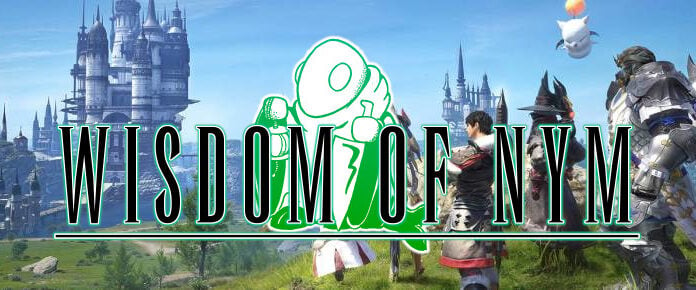
After way, way too long, it looks like an EverQuest 3 may be in the works after all. It’s been rumored for years, of course, pretty much ever since Daybreak threw in the towel with EverQuest Next in 2016 (and Landmark in 2017).
Now as we eye a possible revival of this MMO franchise for 2028 and speculate about what a sequel might entail, it’s the perfect time to revisit what we knew of EverQuest Next and the creative ideas that this studio was pitching to its team and fan base. Are any of these worth carrying forward with this new MMO project? Let’s enjoy a recap and see.
Stylized art
Even though EverQuest Next didn’t launch, we do know a whole lot about how it would look, thanks to both screenshots and the very existence of its sister game, Landmark. Considering how visually dated both EverQuest and EverQuest II ended up being, we’d say the decision to skew more stylized with lush colors and cartoony characters was visually compelling. It definitely looked like a step forward, and even today these graphics look pretty great.
Class mix-and-matching
One of the biggest features of EverQuest Next was the decision to allow players to gradually collect classes during their adventures and then mix-and-match abilities to suit each person’s playstyle. Daybreak was planning to have at least 40 of these collectable professions at launch and named three of them: Elementalist, Cleric, and Tempest.
Multiclassing would be kept in check by an eight active ability limit, with four of those being for your weapon and four for your class skills. Still, having the option to splice together, say, magic and melee abilities or healing and destructive skills is pretty cool — kind of a Guild Wars 1 vibe.
Voxel destruction
If you rewind eight or so years in the past, you’ll be reminded that the big buzzword in the industry was “voxels.” EverQuest Next had an eye on using these building blocks not just to add onto the world but also allow players to manipulate and destroy it. The devs spoke of destroying buildings, digging tunnels, and allowing players to use the environment as a weapon in battles. Of course, the destroyed terrain would regenerate gradually, or else players would render Norrath’s landscape into Swiss cheese.
Reactive NPCs
You might recall that Daybreak bought out Storybricks’ software to incorporate into EQNext’s NPC AI. The idea was to make reactive non-player characters that would have their own routines yet react to player and environment events. By following its internal “core values,” an NPC would mimic basic actions and motivations — and be more believable for that.
Player-created structures and areas
Going back to the voxel tech, EverQuest Next hoped to harness its playerbase’s creativity to flesh out the game world. In fact, that was one of the big selling points of Landmark. That title was supposed to be a test bed for individual creative endeavors, with the studio yanking the best-of-the-best structures and areas to transplant to its sister MMORPG.
Parkour and grappling hooks
Another place where we can see a core staple of EQN playing out in Landmark was the use of its much-beloved grappling hooks. Movement and exploration of this sprawling virtual world was given high priority, and so the devs were working on making characters that could parkour their way across the landscape — including the use of a Batman-style rope if the terrain got too rugged.
World-changing events
It seems as though every ambitious MMO makes some sort of claim while its in development that, this time, it’s going to be the game that truly features world-changing events that’ll be the talk of the town. Daybreak didn’t say how it was going to do this with EQN, exactly, but the studio indicated that it would utilize the malleable nature of the voxel world to change things around and keep us on our toes.
Procedurally generating a multi-layered world
Remember when procedurally generated content was all the rage for about 20 minutes back in the day? Oh man, Daybreak was all in on this concept, vowing that it would use such tech to construct a massive game world that would go far, far below the surface into expansive underground realms.
Tailoring gameplay to the player
While we’re tossing out big ideas left and right, why not state that EverQuest Next would be the first MMORPG that would adapt to the player’s gaming style instead of forcing the reverse? This MMO was supposed to keep track of individual players’ activities and trends, through which it would devise emergent content along those lines. Choices were supposed to matter for the long haul, opening up some pathways while shutting down others.
Loads of social media integration
Hooking EverQuest Next into your social media ecosystem was a big priority for the team, which vowed to allow players to access and utilize Twitch, Facebook, and Twitter from inside the game world. There was even talk of integrating the vaunted “SOEmote” facial recognition and emote tech so that players could tailor their character’s expressions.
 Everyone likes a good list, and we are no different! Perfect Ten takes an MMO topic and divvies it up into 10 delicious, entertaining, and often informative segments for your snacking pleasure. Got a good idea for a list? Email us at justin@massivelyop.com or eliot@massivelyop.com with the subject line “Perfect Ten.”
Everyone likes a good list, and we are no different! Perfect Ten takes an MMO topic and divvies it up into 10 delicious, entertaining, and often informative segments for your snacking pleasure. Got a good idea for a list? Email us at justin@massivelyop.com or eliot@massivelyop.com with the subject line “Perfect Ten.”



















